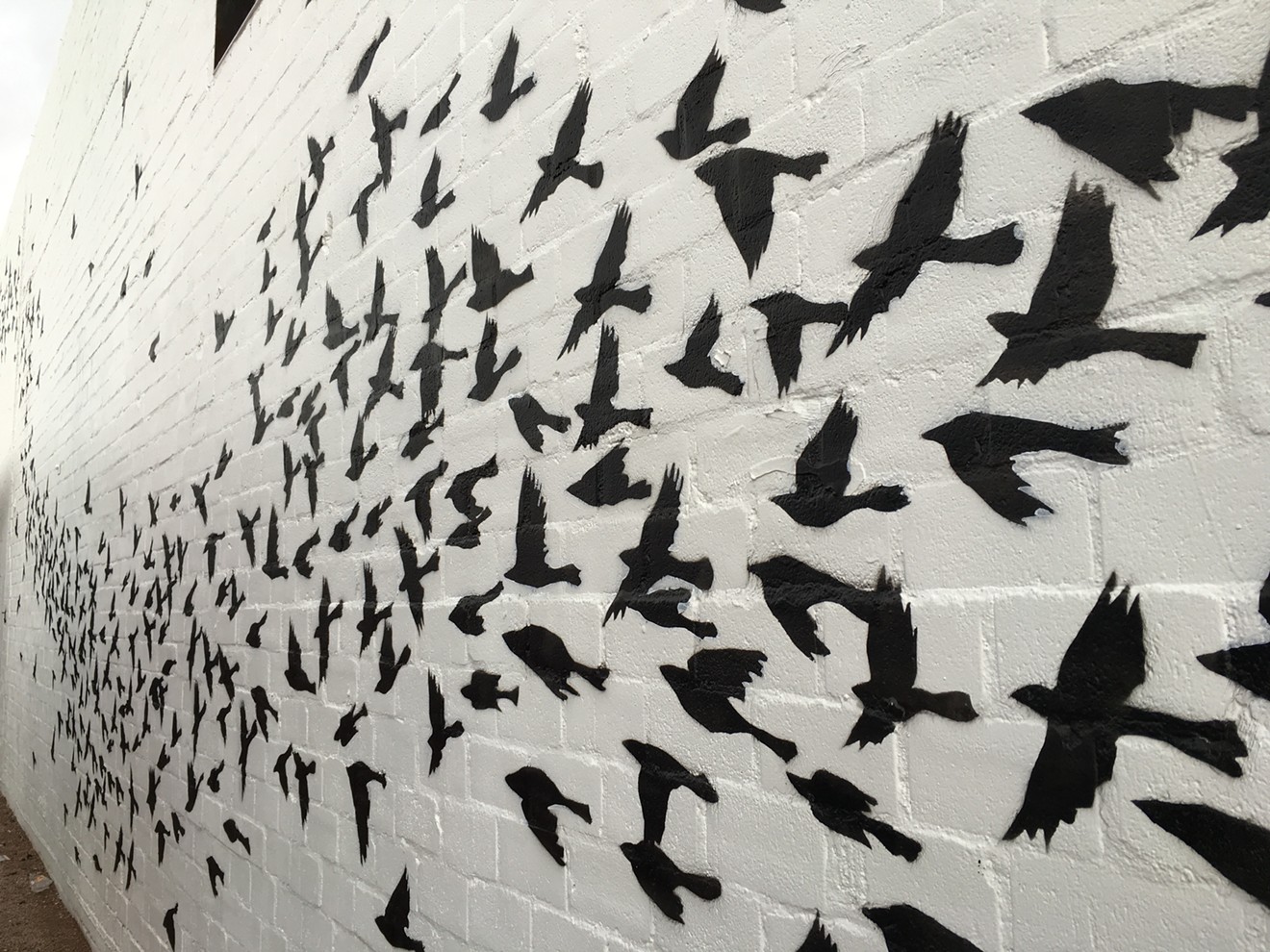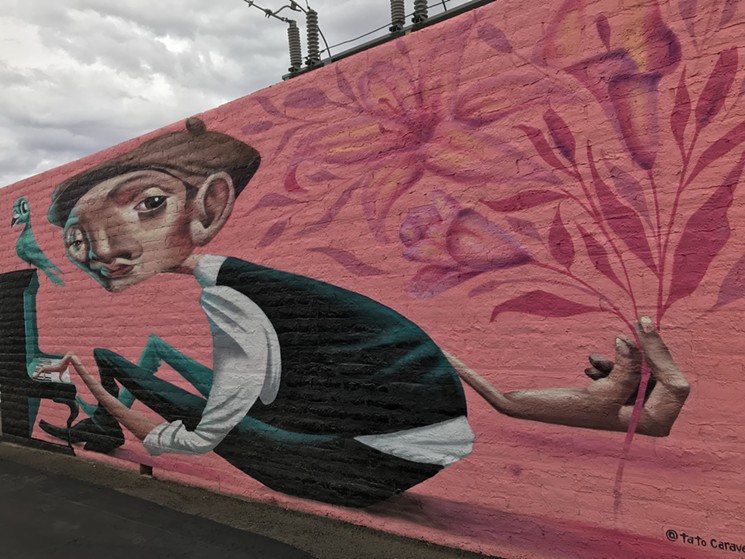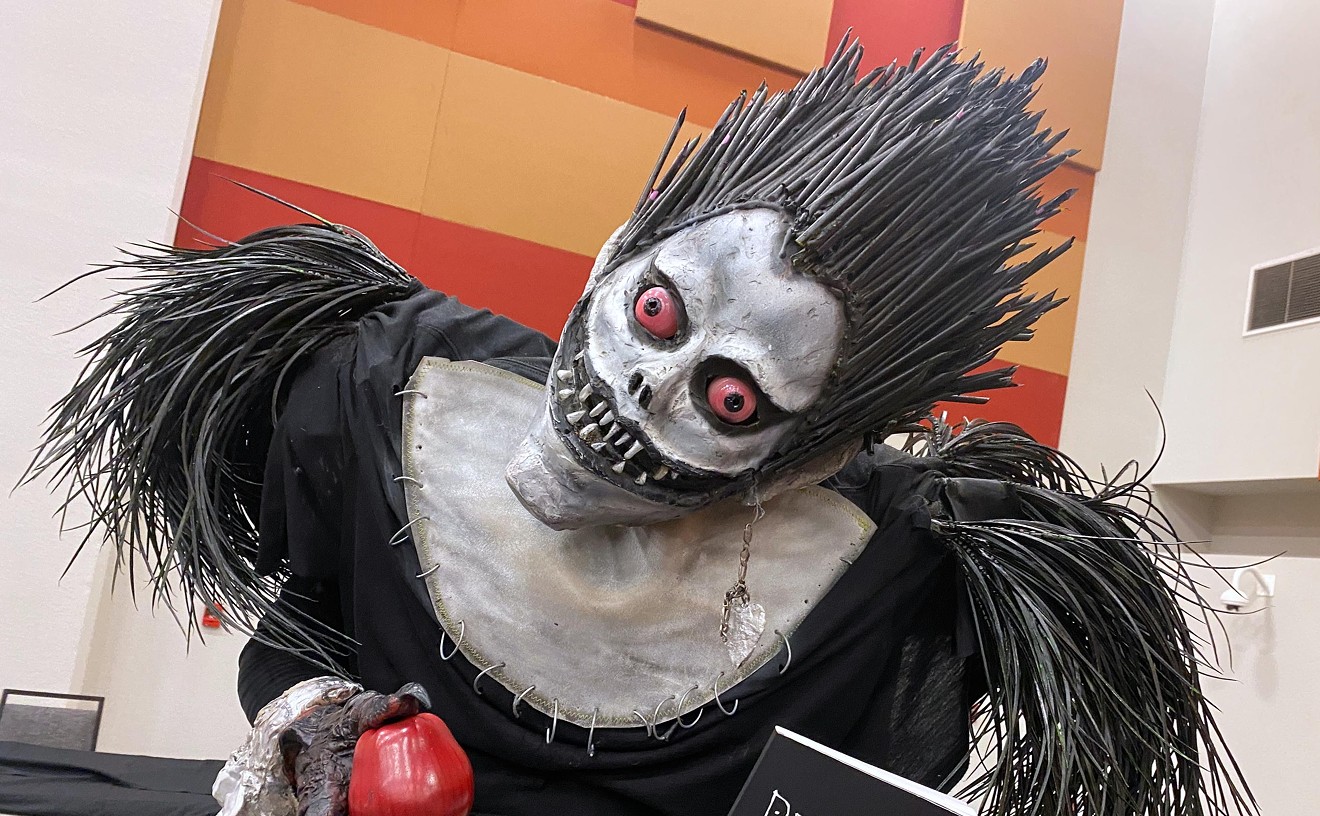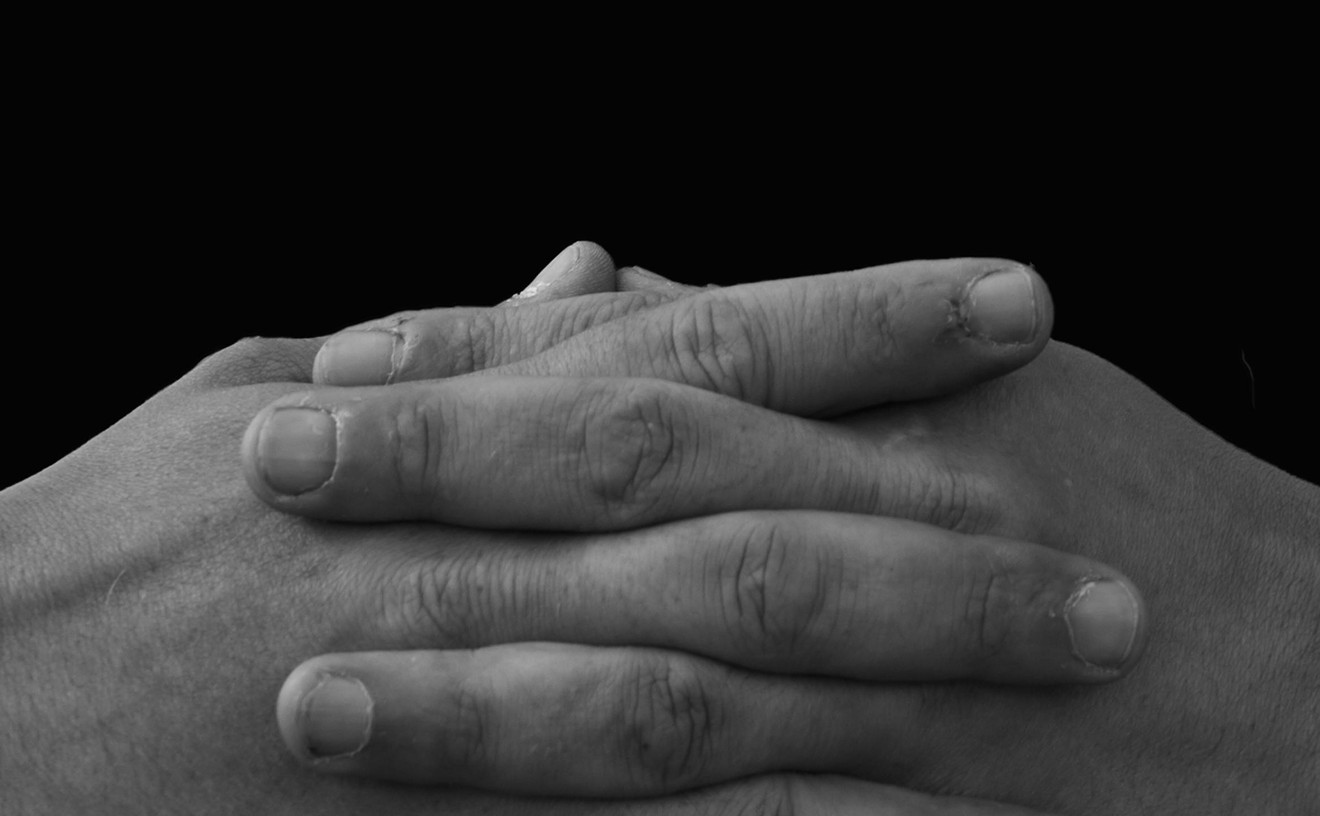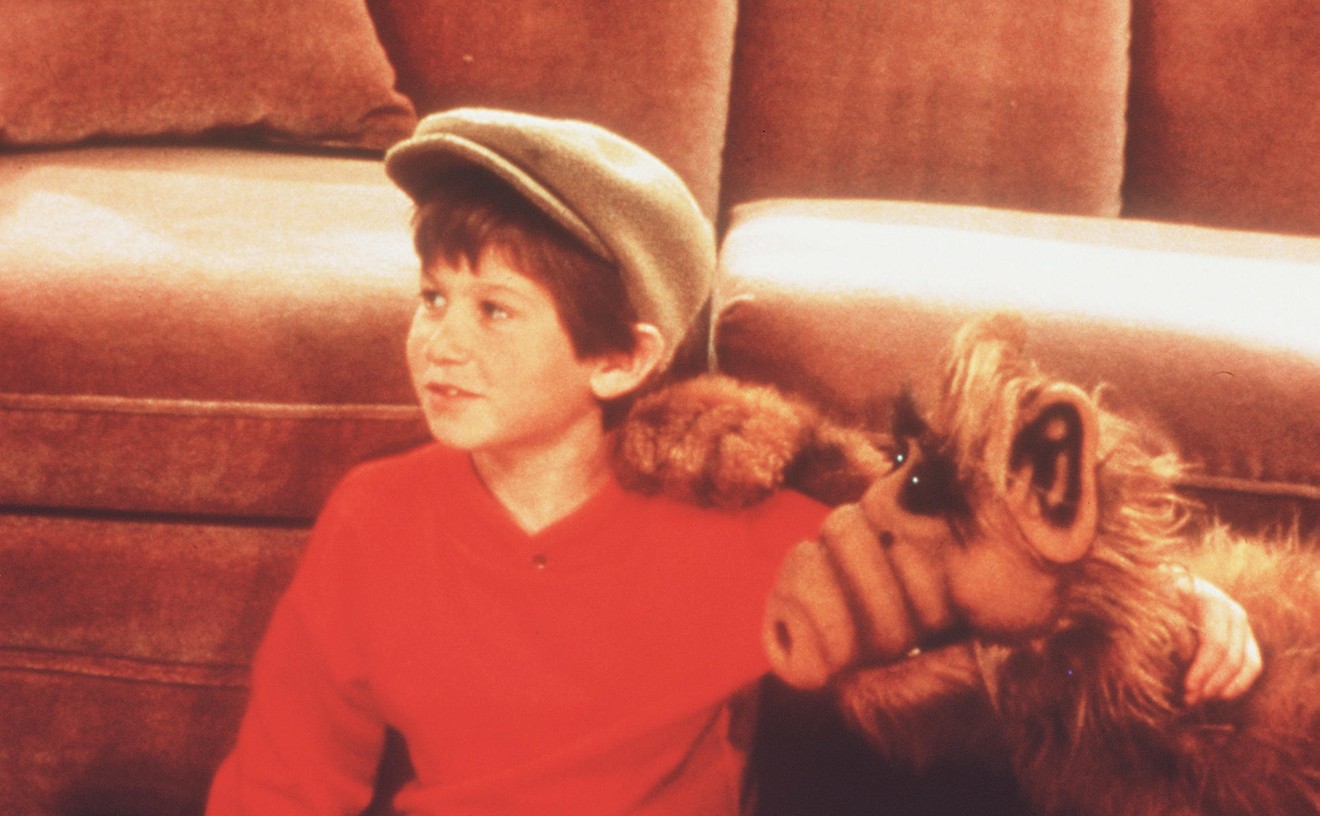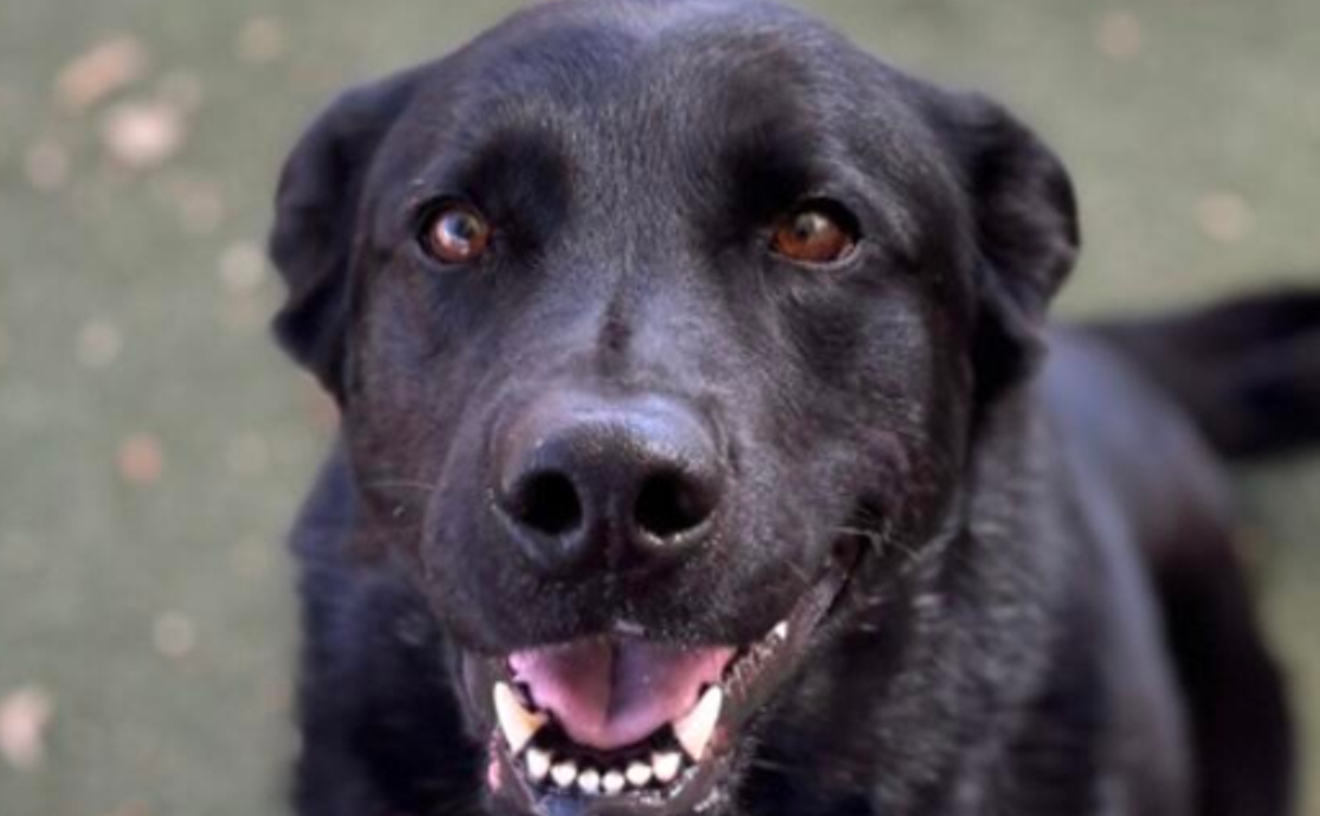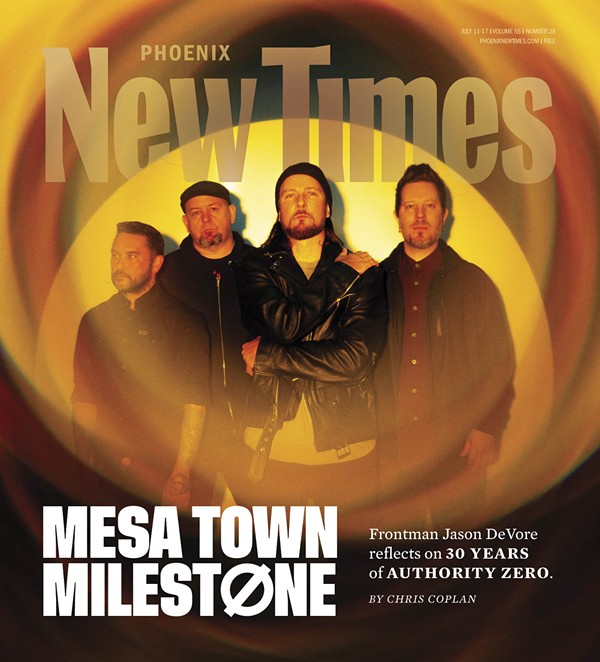It’s common to see people taking selfies with murals in Roosevelt Row. But commercial photo shoots happen there as well, and that’s got some artists concerned their work is being used without their permission.
Recently, Brian Boner learned from a fellow artist that a flock of birds he’d painted several years ago for a mural at monOrchid is the backdrop for a photo used by Chevrolet to promote one of its new 2021 models.
The photo is part of a slideshow titled "View 2021 Chevrolet Trailblazer RS Photos," which was posted on the Microsoft News website on July 13. The same photo appeared at the top of a Car and Driver article about the vehicle that same day, but Boner says it has since been removed.
It shows a turquoise Trailblazer parked in front of Boner’s mural, plus part of a collaborative mural that includes work by Thomas “Breeze” Marcus. The photograph is attributed to Chevrolet, and there’s nothing with the photo to indicate who made the murals.
Boner says he’s been approached by car companies in the past about using the mural as a backdrop. “Typically they do a contract and compensation,” he says. But that didn’t happen this time around, he says.
“They definitely made a conscious decision to use the mural in their advertising,” Boner says. “It’s disheartening.”
Phoenix New Times reached out to GM for comment on July 13. The next day, a GM representative indicated that he'd forwarded our request to colleagues at Chevrolet. As of this writing, New Times has not spoken to anyone at Chevrolet about the photographs in question.
It turns out that the car was also photographed in front of artwork created by Tato Caraveo and Josh Brizuela in 2019 for a collaborative mural project in an alleyway adjacent to The Churchill. “I had no clue about this until early this morning,” Caraveo told New Times on July 13.
Ruth Carter, a Phoenix attorney whose specialties include intellectual property, talked with New Times about the issue of murals and copyright law. Carter, who uses the personal pronoun “they,” works with a law firm called Venjuris.
Carter notes that whoever owns the copyright gets to decide how an artwork can be copied, displayed, or performed — and what derivative works can be based on that artwork.
“If a mural is integrated into another work, such as a book of murals or a photograph, then it is a derivative work,” they say. “If you don’t get permission to use the mural, you’re setting yourself up to get a cease and desist letter.”
When an artist creates an original work in a fixed and tangible medium, they get a copyright under U.S. copyright law, according to Carter. “You don’t have to register to have a copyright,” they say. “The moment a mural is created the artist has a copyright.”
However, an artist can give a mural copyright to someone else, such as a building owner who commissions a mural. “A copyright can only be assigned in a written agreement signed by the person giving it to another person,” they say.
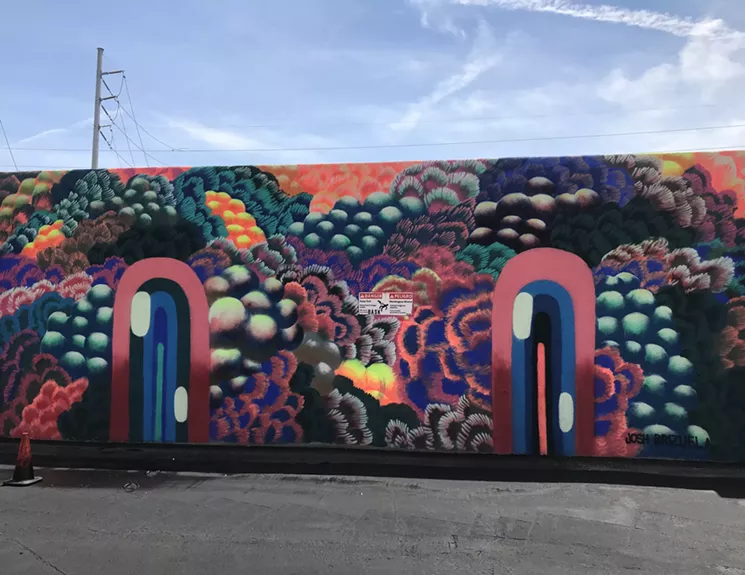
This mural by Josh Brizuela was also used in photographs of Chevrolet's 2021 Trailblazer.
Lynn Trimble
Artists can’t sue for copyright infringement unless the work involved is registered with the U.S. copyright office, according to Carter. Hence, they recommend that artists be proactive, rather than waiting until there’s a problem to register a particular work of art.
“My recommendation to all artists is to decide in advance how you want to respond if your copyright is infringed,” Carter says. “Then you can prepare accordingly.”
For example, artists can draft a cease-and-desist letter so it’s ready to roll out when needed, or register their work with the U.S. copyright office when they create it.
“They may, when they do a mural, want to put something on it such as the copyright symbol, the year, and the words ‘all rights reserved,’” they add. The copyright symbol is the letter C inside a circle.
According to Carter, artists can send a bill to someone who uses their art, informing the person that by using the art they’ve agreed to the artist’s licensing agreement, and specifying the fee they charge for using the work.
"Copyright is one of the few economic benefits available to visual artists in particular," says Greg Esser, a Phoenix artist and former head of the Roosevelt Row Community Development Corporation.
"The courts have been very protective of these rights in case law, and there have been more than enough high-profile cases over the years that ad agencies and car companies should be well aware of the importance of copyright issues, particularly with respect to murals," Esser says.
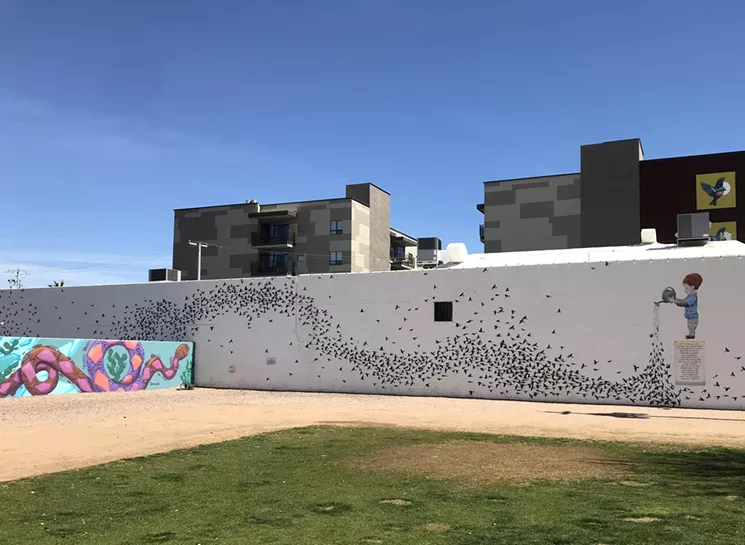
The Trailblazer was photographed with art by Thomas "Breeze" Marcus (left) and Brian Boner.
Lynn Trimble
Coincidentally, Chevrolet also has images of the Trailblazer staged next to an art installation created primarily with yellow traffic signs on the east side of ASU’s Grant Street Studios in the Warehouse District just south of Roosevelt Row.
Kappes notes that fair use involves four factors, including characteristics of the artwork, how the art is being used, how much of the art is being used, and whether using an artwork infringes on the artist’s market. “There can be a lot of gray areas,” Kappes says.
Boner says he'd hoped to reach the people who took the photo, so he could have them sign a licensing agreement. But the artist hadn't made that connection as of early evening on July 14, when he told New Times his next step will be contacting places that offer legal services related to copyright law.
Meanwhile, he's thinking about the wider context for the Trailblazer photos taken in Roosevelt Row.
“It wasn’t called an arts district until the artists made it the arts district,” he says. Now, companies show up to take pictures of artwork, then use the photos without compensating or crediting the artists. “It’s just another struggle you’ve got to deal with.”

